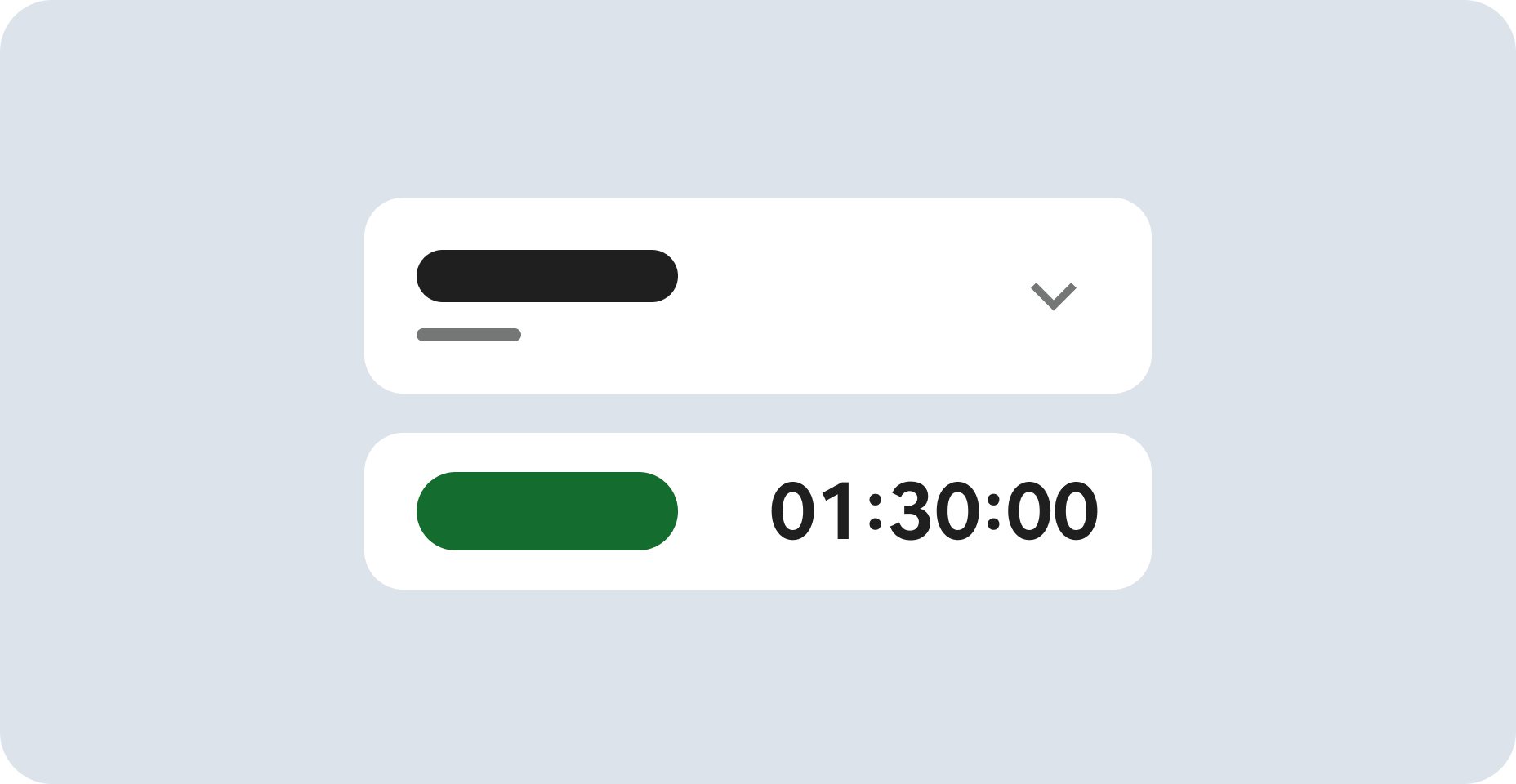
Before you begin
- Labs create a Google Cloud project and resources for a fixed time
- Labs have a time limit and no pause feature. If you end the lab, you'll have to restart from the beginning.
- On the top left of your screen, click Start lab to begin
Enable relevant APIs and set IAM roles
/ 20
Create a dataset
/ 20
Prompt Gemini to explain SQL queries in a sales dataset
/ 20
Generate a SQL query that groups sales by day and product
/ 20
Build a forecasting model and view results
/ 20
In this lab, you are a data analyst who will use Gemini and BigQuery to analyze data and predict product sales as part of a proof of concept project at Cymbal Superstore. As part of the project, you will also determine if Gemini can be used to help analysts generate new SQL queries, complete queries, and explain complex queries.
The data used in the lab is based on the BigQuery public datasets, specifically the bigquery-public-data.thelook_ecommerce dataset that contains synthetic ecommerce and digital marketing data.
This lab assumes that you are familiar with SQL (Structured Query Language) and basic data analytics tasks. Knowledge of Google Cloud products is not assumed. If you're new to BigQuery, see the BigQuery quickstarts.
In this lab, you learn how to perform the following tasks:
For each lab, you get a new Google Cloud project and set of resources for a fixed time at no cost.
Click the Start Lab button. If you need to pay for the lab, a pop-up opens for you to select your payment method. On the left is the Lab Details panel with the following:
Click Open Google Cloud console (or right-click and select Open Link in Incognito Window if you are running the Chrome browser).
The lab spins up resources, and then opens another tab that shows the Sign in page.
Tip: Arrange the tabs in separate windows, side-by-side.
If necessary, copy the Username below and paste it into the Sign in dialog.
You can also find the Username in the Lab Details panel.
Click Next.
Copy the Password below and paste it into the Welcome dialog.
You can also find the Password in the Lab Details panel.
Click Next.
Click through the subsequent pages:
After a few moments, the Google Cloud console opens in this tab.
Cloud Shell is a virtual machine that contains development tools. It offers a persistent 5-GB home directory and runs on Google Cloud. Cloud Shell provides command-line access to your Google Cloud resources. gcloud is the command-line tool for Google Cloud. It comes pre-installed on Cloud Shell and supports tab completion.
Click the Activate Cloud Shell button () at the top right of the console.
Click Continue.
It takes a few moments to provision and connect to the environment. When you are connected, you are also authenticated, and the project is set to your PROJECT_ID.
(Output)
(Example output)
(Output)
(Example output)
In this task, you will configure your environment, account, and user, so that you can use the Cloud AI Companion API for Gemini.
Sign in to the Google Cloud console with your lab credentials, and open the Cloud Shell terminal window.
To set your project ID and region environment variables, in Cloud Shell, run the following commands:
To store the signed-in Google user account in an environment variable, run the following command:
Enable the Cloud AI Companion API for Gemini:
To use Gemini, grant the necessary IAM roles to your Google Cloud Qwiklabs user account:
Adding these roles lets the user use Gemini assistance.
To verify the objective, click Check my progress.
In this task, you will create a dataset and enable the Gemini features in BigQuery.
In the Google Cloud console, select the Navigation menu (), and then select BigQuery. If prompted click Done.
In the Explorer panel, for
You create a dataset to store database objects, including tables and models.
In the Create dataset pane, enter the following information:
| Field | Value |
|---|---|
| Dataset ID | bqml_tutorial |
| Location type | select Multi-region |
Leave the other fields at their defaults.
Click Create Dataset.
To view Gemini features in BigQuery, in the toolbar, click Gemini (). If it's not visible, refresh the page.
In the Gemini in BigQuery SQL editor list, select all of the following options:
Auto completion
Auto generation
Explanation
To verify the objective, click Check my progress.
Gemini can help you discover and analyze your available data.
Before you can query data, you need to know what data you can access. Every data product organizes and stores data differently. To get help, you can send Gemini a natural language statement (or prompt) like, "How do I view which datasets and tables are available to me in BigQuery?"
If you want to understand the characteristics of different data query systems, you might prompt Gemini for specific product information like the following:
"How do I get started with BigQuery?"
"What are the benefits of using BigQuery for data analysis?"
"How does BigQuery handle auto-scaling for queries?"
In this task, you will prompt Gemini to answer questions about your data.
In the Google Cloud console, select the Navigation menu (), and then select BigQuery.
In the Google Cloud console toolbar, click Open Gemini ().
Click ENABLE to enable the Gemini for Google Cloud API.
The Welcome to Gemini in Cloud Console message is displayed in the Gemini pane. Click Start Chatting.
In the Gemini pane, enter the prompt:
Click send Send prompt ().
Gemini returns a response similar to the following:
To optionally reset your chat history, in the Gemini pane, click Reset Chat ().
Gemini can help you work with SQL. For instance, if you work with SQL queries that other people wrote, Gemini in BigQuery can explain a complex query in plain language. Such explanations can help you understand the query syntax, underlying schema, and business context.
To prompt Gemini to explain an example SQL query, follow these steps:
In the Google Cloud console, select the Navigation menu (), and then select BigQuery.
Under Welcome to BigQuery Studio. Click SQL QUERY, to create a new SQL query.
In the query editor, paste the query that you want explained.
For example, you might want to understand how data tables and queries are related in a sales dataset, and you might want help writing queries that use the dataset. In the following example query, you might understand which tables are being used, but other sections of the query might take you time to parse and understand.
Select the query that you want Gemini to explain, and right-click on this selected query. In the menu, click Explain current selection.
The SQL explanation appears in the Gemini pane.
Using the example query from the previous step, Gemini returns an explanation similar to the following:
To verify the objective, click Check my progress.
You can provide Gemini with a prompt to generate a SQL query based on your data's schema. Even if you're starting with no code, a limited knowledge of the data schema, or only a basic knowledge of SQL syntax, Gemini can suggest one or more SQL statements.
In this task, you generate a query that lists your top products for each day. This type of query is often complex, but you can automatically create a statement using Gemini. You then use tables in the thelook_ecommerce dataset and prompt Gemini to generate a query to calculate sales by order item and by product name.
In the Google Cloud console, select the Navigation menu (), and then select BigQuery.
In the navigation menu, click BigQuery Studio.
In the Explorer pane, click +ADD.
In the Add dialog, within the Search for data sources field, enter public datasets.
Press Enter. You see public datasets in the list.
Click public datasets. You see the list of public datasets in the Marketplace.
Search for thelook. You see TheLook Ecommerce public dataset appears in the list.
Click thelook Ecommerce, two times.
Click VIEW DATASET.
Expand the bigquery-public-data that is added to the explorer panel.
Scroll down and find thelook_ecommerce, then expand the dataset. You see the order_items and products tables listed.
Click on the order_items table. You see the data schema displayed.
Return to the explorer panel.
Click on the products table. You see the data schema displayed.
Click to open a new untitled query tab.
In the query editor, enter the following prompt, and then press ENTER. The pound character (#) prompts Gemini to generate SQL.
Gemini suggests a SQL query similar to the one below. If you encounter any errors, please re-run the prompt, or you can execute the following command.
To accept the suggested code, click Tab, and then click Run to execute the SQL statement. You can also scroll through the suggested SQL and accept specific words suggested in the statement.
In the Query results pane, view the query results.
To verify the objective, click Check my progress.
In this task, you use BigQuery ML to build a forecasting model and query it using a Gemini prompt.
You use the following example query with actual sales, which are used as an input to the model. The query is used as a part of creating the ML model.
To create a forecasting ML model, in the BigQuery SQL editor, run the following SQL:
You can use Gemini to help you understand this query.
When the model is created, the Results pane displays a message similar to the following:
Click to open a new untitled query tab.
In the query editor, enter the following prompt, and then press ENTER. The pound character (#) prompts Gemini to generate SQL.
Gemini suggests a SQL query similar to the one below. If you encounter any errors, please re-run the prompt, or you can execute the following command.
To accept the suggested code, click Tab, and then click Run to execute the SQL statement. You can also scroll through the suggested SQL and accept specific words suggested in the statement.
In the Query results pane, view the query results.
To verify the objective, click Check my progress.
In this lab you learned how to:
Now that you have learned how to use Gemini to analyze your data with BigQuery, if you want to learn more about Gemini please refer to Write better prompts for Gemini in Google Cloud.
When you have completed your lab, click End Lab. Qwiklabs removes the resources you’ve used and cleans the account for you.
You will be given an opportunity to rate the lab experience. Select the applicable number of stars, type a comment, and then click Submit.
The number of stars indicates the following:
You can close the dialog box if you don't want to provide feedback.
For feedback, suggestions, or corrections, please use the Support tab.
Copyright 2024 Google LLC All rights reserved. Google and the Google logo are trademarks of Google LLC. All other company and product names may be trademarks of the respective companies with which they are associated.


This content is not currently available
We will notify you via email when it becomes available

Great!
We will contact you via email if it becomes available


One lab at a time
Confirm to end all existing labs and start this one
